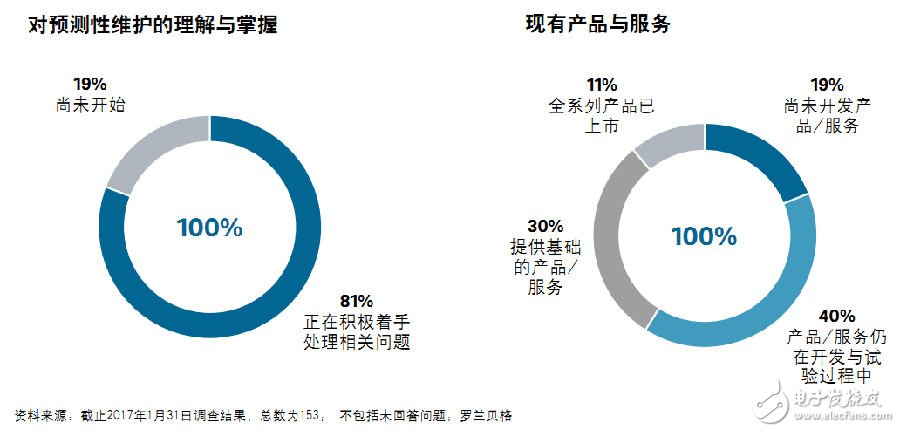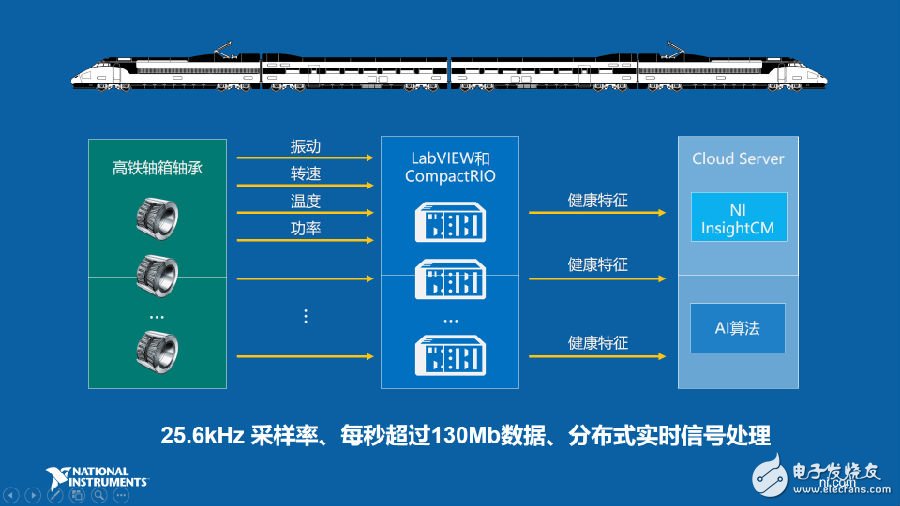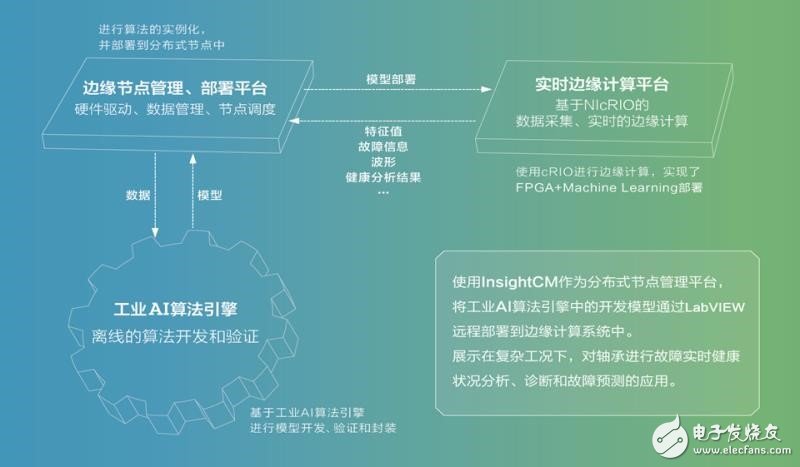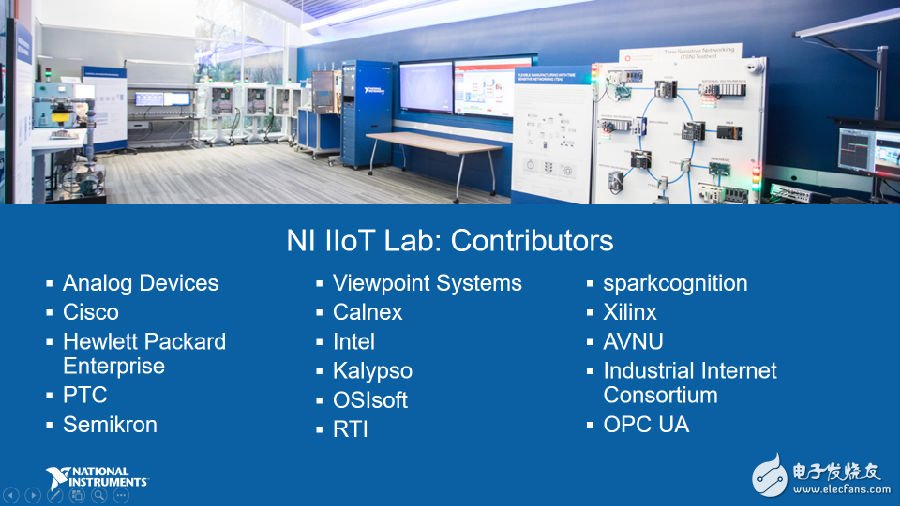As one of the important application scenarios of the Industrial Internet of Things (IIoT), predictive maintenance has been paid more and more attention by enterprises. According to a survey conducted by Roland Berger and Hannover Messe for 153 mechanical engineering companies focusing on transmission engineering/hydraulic drive, electrical automation/robot technology, 81% of the companies surveyed have placed predictive maintenance, although Nearly 40% of the companies surveyed are already providing related technologies and services, but most of them are still in the product research phase or have not started any related work. Roland Berger pointed out in the report: "In the field of predictive maintenance applications, how to systematically transform data into (customer) interests and apply them to specific business models, there is still a big gap between ideals and reality."

Figure 1 Roland Berger's data on the predictive maintenance survey report
Cui Peng, Marketing Manager of Industrial IoT Industry, National Instruments (NaTI), said: "As a new asset, resource and production factor, industrial big data is the core of the Industrial Internet of Things, and even China. An important strategic resource for manufacturing transformation and upgrading.†NI's platforming solution is actively helping customers exploring predictive maintenance applications to apply big data to specific business models, while CRRC Qingdao Sifang Locomotive Co., Ltd. and Beijing Tian Ze Zhiyun Technology Co., Ltd. (hereinafter referred to as “Tianze Zhiyunâ€) is one of NI's important partners in the field of predictive maintenance and industrial intelligence.
1 Predictive maintenance inspiration from the case of China's high-speed rail project
The innovation of China's high-speed rail has attracted worldwide attention. The “Revival†officially operates at a speed of 350 kilometers per hour, marking China's highest speed in the world's high-speed rail business operations. As a prerequisite for achieving high speed and 100% security, predictive maintenance can be used to improve the safety of high-speed rail.
CRRC Qingdao Sifang Locomotive & Rolling Stock Co., Ltd., together with Tianze Zhiyun, built a predictive maintenance solution for high-speed rail based on NI InsightCMTM and CompactRIOTM platforms. In order to develop a machine learning algorithm for predictive maintenance, it is first necessary to acquire a large amount of data for model training in a short time. CRRC Qingdao Quartet tried to quickly build a high-speed rail online real-time monitoring system, test 8 rotating parts on the high-speed rail test line, measure the vibration and speed of each rotating part, and carry out a large amount of time series data collected as needed. Screening, analysis, and further access to the health of all rotating parts. However, in this seemingly clear-cut prototype exploration, CRRC Qingdao Quartet still faces five major challenges:
Real-time acquisition challenge: This project needs to quickly build an online real-time monitoring system to simultaneously collect the vibration and rotation speed of eight rotating parts in the same equipment, which requires twenty acquisition channels;
Sampling frequency challenge: In order to fit the speed of high-speed rail operation, the shaft speed will be as high as 2200 rpm. In addition, in order to ensure that the frequency range covered by the sampling can cover all fault frequencies, the sampling rate must reach a very high level, that is, the sampling rate of 25.6 kS/s;
Continuous acquisition challenge: InsightCM is a NI system for online condition monitoring of devices, suitable for distributed condition monitoring, but the purpose of this project is to perform continuous data acquisition to obtain more data in a short time. analysis;
Data processing challenge: Multi-channel high-frequency acquisition will generate a large amount of data in a short time, and the data processing and feature extraction will generate health-related information and transmit it to the server, which is the computing power of the test equipment. Have a challenge with memory allocation capabilities;
Time synchronization challenge: First, the project needs ten channels to be synchronously acquired to realize the description of the entire device through different dimensions at the same time. Secondly, the algorithm development has special requirements on the time stamp of the data, and the device end and the server need to be tested. The end time remains highly consistent.

Figure 2 Prototype exploration test device based on NI platform
In order to solve the problems encountered in the above prototype exploration stage, the project team used InsightCMTM+CompactRIOTM solution for data acquisition: according to the number of channels and sampling frequency, select cRIO-9036 + NI-9232 (ie CompactRIO controller + C series sound and The vibration input module) builds the test end device. After the actual measurement, the computing power and memory allocation capability of CompactRIO fully meet the requirements. The InsightCM not only realizes the synchronization of multi-channel data acquisition, but also sets the NTP time server to make the device end and the server end. Consistent time allows engineers to eliminate the need for secondary development of CompactRIO, which reduces the complexity of the implementation and speeds up the implementation.
According to the feedback from the project team: “We used InsightCM with CompactRIO for data acquisition and analysis based on the collected data. The collected data is of very high quality. Our PHM intelligent algorithm can meet real-time requirements in cRIO. We analyzed all the faults in the high-speed rail test and the accuracy is very high."

Figure 3 The overall architectural logic block diagram of the prototype exploration solution
2 beyond acquisition, NI solution integrates edge computing and cloud computing advantages to help data value mining
As we all know, in the industrial Internet of Things, edge computing is deployed at the terminal or edge. In addition to data acquisition, it is the key to implementing embedded artificial intelligence. Therefore, the real-time performance of edge-side computing is stronger than that of the cloud, and the NI platform solution supports real-time. At the same time, the edge calculation is combined with the advantages of cloud computing and cloud computing.
Based on close cooperation with NI, Tianze Zhiyun has leveraged NI's platforming solutions for predictive maintenance and other IIoT applications. For example, when implementing an engineering solution, Tianze Zhiyun's engineers first deployed the industrial AI algorithm engine in the cloud, and then connected to other NI edge computing systems through InsightCM, carrying the results of the developed algorithm, helping The user generates awareness of the system; finally, the bottom layer executes the machine learning model through CompactRIO, and exchanges data with the operation result, and the operation result is released through InsightCM and Web Service.
“Execute the corresponding edge calculation at the edge, extract the feature data from the original data, and further upload the feature information to the private cloud or the public cloud to complete the calculation related to complex PHM (PrognosTIcs and Health Management). It is a reasonable architecture model at present. NI's CompactRIO architecture can provide a relatively flexible sensor interface and relatively rich computing resources. This concept is quite compatible with us.†Liu Zongchang, vice president of Tianze Zhiyun R&D, said: “Our NI CompactRIO and InsightCM have undergone a lot of secondary development, enabling them to implement more edge computing functions that are close to the user's needs, and to meet remote scheduling and management, and finally upload valuable information to the cloud for edge computing and The advantages of cloud computing integration."
“In the exploration phase of prototyping, NI platform solutions are known for their flexibility and speed. For customers with specific needs, NI can provide convenient secondary development by itself or by working together to achieve a platform-based solution that meets customer's customized needs. Therefore, in different fields, at different stages, NI can cut in with the most suitable solution." Cui Peng's summary of Tianze Zhiyun's case reflects the advantages of the NI platformization solution.
3 facing the challenges of industrial big data, NI pillows
Predictive maintenance, as one of the most important applications of industrial big data, is the beginning of IIoT “value realizationâ€, which runs through the entire IIoT process, regardless of monitoring, testing, control, or later processing to the cloud and decision-making. Big data is the foundation.

Figure 4 NI believes that solving industrial big data challenges requires two steps
To solve the industrial big data challenge, NI believes that the first step is smarter measurement, and the second step requires smarter data management, which is inseparable from more advanced intelligent solutions. At this year's NIWEEK 2017, NI is introducing several new products, such as LabVIEW NXG, which minimizes the time it takes to measure with NI data acquisition devices or third-party benchtop instruments; and distributed system management software that emphasizes remote data management. SystemLink; NI InsightCMTM, an enterprise-wide distributed online monitoring software that monitors asset health for operational and maintenance planning; and the latest CompactDAQ Ethernet chassis cDAQ-9185 and cDAQ-9189 with TSN support...

Figure 5. NI joins the upstream and downstream giants of the industry chain to establish IIoT Lab
In addition to launching smarter solutions, NI is paying more attention to the construction of large ecosystems. At the beginning of this year, we will join hands with upstream and downstream giants in the industry chain to jointly establish the Industrial IoT Lab (IIoT Lab) to accelerate the integration of industrial IoT in the world. Or strengthen the training of local partners, such as Beijing Tianze Zhiyun, Tongji University Industry 4.0-Smart Factory Laboratory, etc. NI is actively localizing international advanced experience and based on its own platform-based program to accelerate the promotion of China Manufacturing 2025. 's arrival
Fast Charger,Qc 3.0 Charger,Pd Charger,Gan Charger
ShenZhen Yinghuiyuan Electronics Co.,Ltd , https://www.yhypoweradapter.com